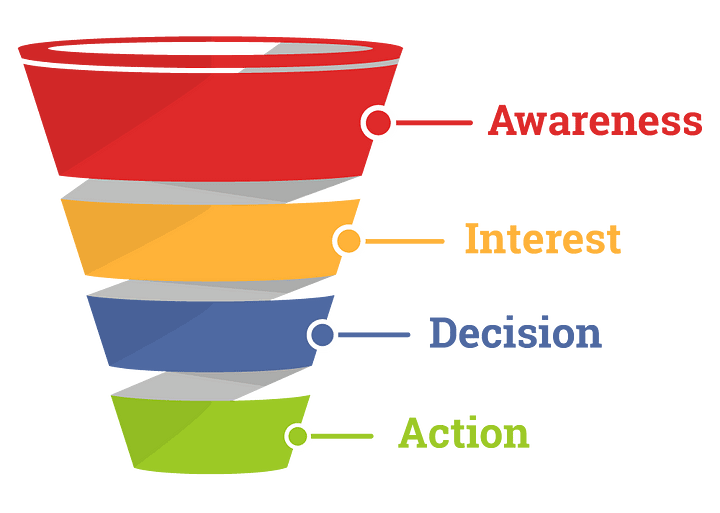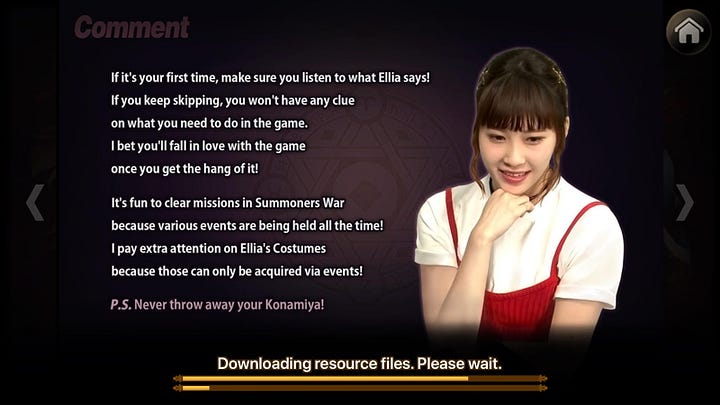
Featured Blog | This community-written post highlights the best of what the game industry has to offer. Read more like it on the Game Developer Blogs or learn how to Submit Your Own Blog Post
How Marketing drives engagement in free to play games
The role of marketing in free to play games is often underestimated. In the modern understanding of marketing, you need to accompany the customer after purchase and make him a loyal client and an advocate for the brand.

Engagement is a user’s response to an interaction that gains, maintains, and encourages their attention, particularly when they are intrinsically motivated (Measuring User Engagement, Mounia Lalmas)
Engagement is an integral metric because it includes retention, monetization, and customer’s loyalty. According to the SuperData research center, the average revenue per monthly active player is the adequate metric for measuring engagement. It is worth mentioning that a long time champion in engagement free to play (f2p) PC games is World of Tanks.
Marketing Didn’t Catch On
So, World of Tanks team really can engage players in free to play games, and I am glad that I was lucky to be part of this team for many years and learned a lot during this time. By the way, World of Tanks operated without formal marketing for four years after release. “Marketing Didn’t Catch On,” joked the chief World of Tanks game designer Sergei Burkatovsky.
Probably you are now looking at the headline with bewilderment and then realize that something does not fit. Why do you talk about marketing that drives engagement? World of Tanks had large operations team and some services like performance advertising and PR. The business of free to play games is still evolving, and many processes are taking place without regard for formal frameworks.
If a representative of an established industry had analyzed free to play business operations, he would say something like this “Operations team is a sales department with key marketing functions, while what game companies called marketing is advertising with the functions of PR.”
Does this mean that what the World of Tanks operation team does, in essence, is marketing? I think that it is. The secret ingredient of WoT success is a marketing is not divided from operations. But do not try this at home. This will not work always and everywhere.
Acquisition and engagement
Let’s look at the most common sales funnel. Awareness and interest can be referred to an acquisition. At this stage, much depends on what information the potential customer receives. Decision and action stage can be called engagement because the activity of the customer is essential at this stage.
In the free to play games, the final point of the funnel (Action) is not the installation of the game but a particular moment in the game itself. Oscar Clark in the book “Games as a Service” calls it ‘Permission to Play” and believes that the process of engaging up to this point takes 8–12 days in the game. Essential components of the “Permission to Play” are direct payments and the development of the social context. A little later we will talk more about this.
In free to play games, the installation of the game takes place at the Interest stage. Usually, at this point, the Marketing team passes player to the Operations team. It is impossible not to use essential marketing competencies at the Decision and Action stage, but the question is how consciously this is happening and whether these skills involves in the process. Marketing as only lead generation is the very outdated concept.
How Marketing drives Engagement
New MAU (monthly active users) as an indicator of the effectiveness of the marketer is becoming less and less a real indicator, while services for processing large data are becoming more accessible. You can accurately calculate the Customer Lifetime Value — which is the profit from the player during his life in the game, for any channel in real time. The LTV in free to play the game is an indicator for which the marketer has no influence, but in fact, is obliged to provide. Cost per Install (CPI) must be bigger than LTV, but what if the problems are on LTV side?
Marketing should work throughout the funnel with a specific focus on the gap from the game’s installation to the player’s “Permission to Play” At this point, about 70% of the audience of the game reduces. What do we have to do to prevent it?
1) Create expectations
2) Content Nurturing
Creating expectations
At one CPA conference, I heard a compelling case about the game “Dragonknight” Participants and speakers at the CPA conferences are marketing experts who worked with CPA providers, including gaming companies. In their work, a crucial indicator is the quality of traffic, because the developer will not pay for the non-engaged players.
The game, “Dragonknight” has the original script involving the player. In the beginning, the player is given an egg and only after performing a series of tasks the player has own dragon. Many players left without waiting for this happy event. However, the developers once noticed a cohort of players with exceptionally long lifetime and it turns out that all of those players were attracted by one of the marketers.
What did the marketer do? Firstly, she played the game. After that, it became clear that the player has no unique emotional connection with the egg. The marketer used pre-landing, in which she suggested to the potential player randomly choose his future dragon. Next, the player got a common dragon.It is not a big deal. Then one more attempt appeared, and, there was rare luck — the Legendary Dragon! After that, the potential player was advised to install the game and not forget to pick up his unique egg.
There are no common dragons in the game. All the dragons are legendary. But for the players who passed through pre-lending, it was a completely different experience because in their mind all the other players mostly had the usual eggs and only he or she had a unique one. The situation that seems like a potential error in the game’s design turned into a powerful tool for engaging players due to the non-trivial approach of the marketer.
We are talking about the “Aha” moment, in which the user understands the functionality of the product. In games, you can make this moment truly memorable, and with the help of marketing, we can form a player’s expectations, which will give him enough endurance to live up to the “Aha” moment.
Content Nurturing
Assuming you are in a bar in the company of people you know for a long time and the beer keeps flowing continuously, along with a stream of jokes and stories. It would be bizarre if someone took the trouble to explain in detail the meaning of every joke. Now imagine that you are in a similar situation in an unfamiliar company then you would probably not abandon the inconspicuous prompter explaining the joke and revealing the background stories.
The new player is in the same situation in the game. He is emotionally involved and immersed, but our rational mind also wants to participate in this. It catches a grain of information and tries to tie them into a coherent picture. But if the game has a metagame, and for most free to play games they do, then these attempts in advance are doomed to failure. The game can not break its rhythm and explain to the player all the consequences of its decisions.
At the very moment when the player must make the first purchase, regardless of how emotionally motivated he or she was, they will always seek approval from rational ego. If the whole picture in the player’s head does not work out, then most likely the purchase will not take place. Remember what I said earlier about “Permission to play,” which serves as an essential basis for engagement. Your rational ego gives you permissions, not emotions.
The task of marketing is to help the player to form a bright idea of what is happening in the game. It is always a narrative, a story, and the best option is if other players tell this story. You can find the best example of this approach in the game “Summoners War,” During the game loading, an interactive menu with Game Introduction, Interesting Records, and User Interview is available. In the last section, you can read the impressions of real players from the game and their pieces of advice.
If the game has fansites, wiki encyclopedia, a live forum on Reddit, and videobloggers are involved, then everything is fine. If not, then marketing should help. In the “World of Tanks,” we provided support for videobloggers even in the times when youtube did not pay money to content creators. Now video created by fans of the game generate 50 million hours of views in a month.
Content generated by the fan community tends to shift focus from the problems of newcomers to the issues of high-level players. Encouraging the creation of content for beginners is necessary, and it can be done with the help of a content management policy in your owned social networks of the game.
Owned social media networks are platforms where the new player has a higher probability of visiting, and you need to organize and optimize them properly so the new player can see the information they need there. Also, you can actively offer the invitation to join the social networks of the project to the player in the “client” of the game.
Summary
The role of marketing in free to play games is often underestimated. Even in the classic sense of marketing, you must bring the customer to the point of purchase. Installation of free to play game is not a purchase. In the modern understanding of marketing, you need to accompany the customer after purchase and make him a loyal client and an advocate for the brand. The further the client goes along this path — the more the professional requirements for the marketer is needed. Any error at a later stage leads to the loss of all that was invested in the client earlier on.
Read more about:
Featured BlogsAbout the Author
You May Also Like












